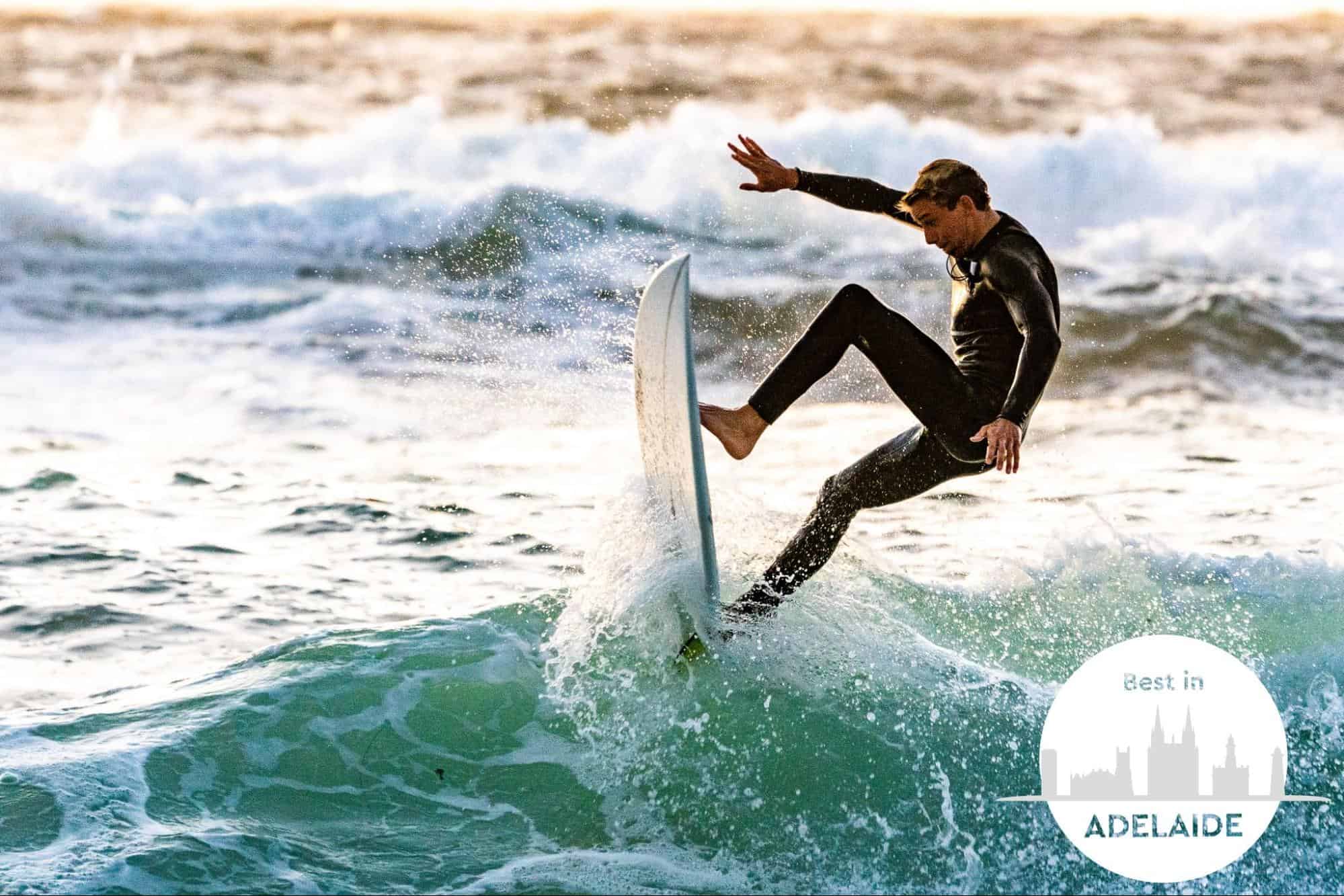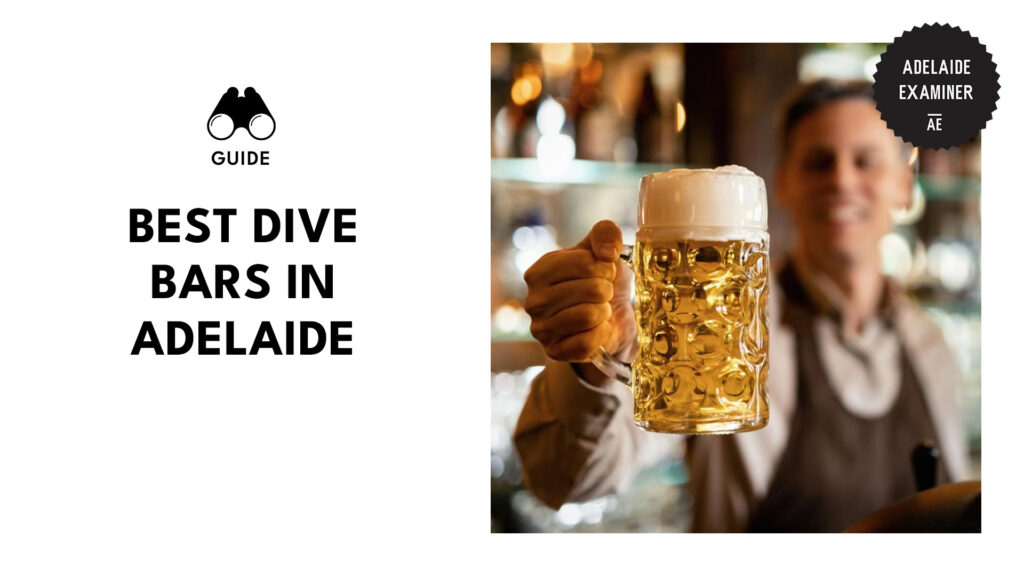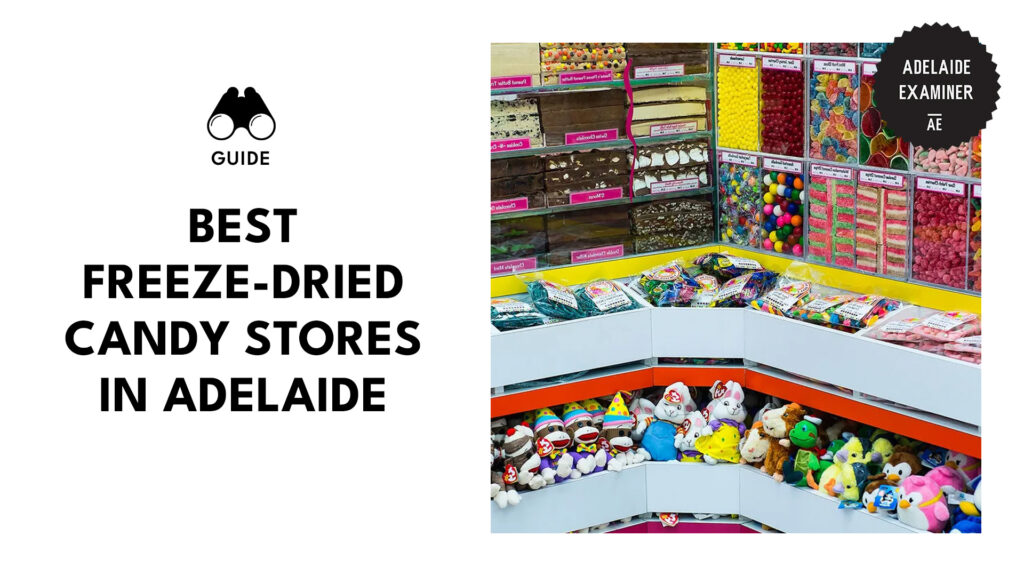
Surf’s Up Down Under: Top Surfing Spots Near Adelaide
Looking to ride the waves in Adelaide like a true-blue surfing boss? Well, hang ten and buckle up, as beaches near Adelaide aren’t your average sandy paradises; they’re also gnarly surfing spots ideal for newbies and master wave riders alike!
We don’t want to bore you like a surfer stuck in a waveless ocean. Scroll down to see the best surfing areas near Adelaide, from Kangaroo Island’s Vivonne Bay with tame beach breaks to Middleton’s buzzing beach with adrenaline-pumping swells!
Goolwa
Goolwa is known for its laidback energy, but don’t worry, this beach’s waves know how to put on a show, especially when the swell picks up a notch.
We hit this spot on a lazy afternoon, and our 1-hr chill seaside drive quickly turned into a surfing adventure, thanks to Goolwa’s waist-high and peeling waves. Knee-high surges took over in the late afternoon, which was great news for our team’s surfing newbies.
Speaking of newbies, Goolwa is often touted as one of the best surfing spots near Adelaide for beginners. Surfing schools are found near the coastline, with Ocean Living Surf School and Surf and Sun Surf as some of the highest-rated ones.
Tips:
- Don’t forget to take a pit stop at Motherduck Cafe after riding the waves like a surfing legend. This cafe is a beautifully restored stone cottage from 1909 and our team’s holy grail of post-surf relaxation in Goolwa.
- Goolwa can have strong currents and rips like any surf spot, especially during higher tides. Always take a moment to observe the water before paddling out and look for any channels or areas with faster-moving water.
- A wetsuit is essential to keep you warm in the chilly Southern Ocean waves if you surf in Goolwa during the colder months (typically from May to October).
Southport Beach
Southport Beach is perfect for veteran surfers and those looking to take their wave-riding skills to the next level.
At the river mouth and the middle section of Southport Beach, you’ll be treated to a surfer’s dream—rolling lefts and rights along inner and outer sandbars.
And if you’re looking for a challenge and have some serious surfing swagger, go to The Hump at the beach’s northern end.
Just be careful. The Hump isn’t for the faint of heart, as it offers meatier lefts that will put your skills to the ultimate test.
Tips:
- Winter, particularly June, is the prime time for surfing at Southport Beach. Clean waves with rideable swell and light offshore winds can be expected around 34% of the time during this month, while the waves might be less favorable due to strong winds about 55% of the time.
- Expect a balanced mix of wind swells and groundswells, with the perfect swell direction being from the east-southeast. In addition, remember that this beach’s waves break to the left and right at the beach break.
- Southport Beach’s chances of small waves ideal for beginners are small, around 11%. But if you genuinely want to practice on this beach, always surf within your abilities and be mindful of potential hazards, such as rocks or strong currents.
- Moreover, don’t forget to wear a leash to keep your board close and appropriate protective gear.
Coffin Bay – Eyre Peninsula
If a 6-hour drive to the stunning Eyre Peninsula doesn’t grind your gears, we suggest going to Coffin Bay for a sensational surfing experience.
Different types of waves await on this beach, but if you prefer majestic backdrops, Flat Rock is where it’s at, a standout spot renowned for its beautifully sculpted barrels.
For those not contented with Coffin Bay’s relaxed vibes, head further south to Tinah Beach, aka the Salmon Hole. The beaches along the way are worth a detour, but be careful, as sharks might be patrolling the waters.
Tips:
- You’ll want to schedule a visit to Coffin Bay in February. Why? You can expect consistent, clean waves with rideable swell and glorious offshore winds during summer.
- The weather and ocean conditions on the Eyre Peninsula can change rapidly. Bring layers of clothing and be prepared for unexpected weather changes during your surf trip, may it be on Coffin Bay or Tina Beach.
- If you need to familiarize yourself with the area, consider hiring a local surf guide or taking a surf lesson. These local surf guides can provide valuable insights into the surf spots and their conditions and safety tips specific to the Eyre Peninsula.
Middleton
Sure, the surf on Middleton can be a bit weak or “fat,” and paddling out during big swells can feel like an epic feat, but don’t let that deter you.
Aside from the powdery-white sandbar and clear waters, Middleton’s long, crumbly waves stretching across kilometers of peaks are an absolute dream for beginners!
Moreover, Middleton’s northerly winds near the coastline are exceptional for newbies who don’t want to go far.
Tips:
- August is the best time for rideable waves at Middleton, especially for practicing surfers. However, we suggest going in June or July if you’re a surfing pro, as Middleton’s August waves might be too small for experienced surfers.
- Middleton is considered by most as the south coast’s top surfing area. Be respectful, wait your turn, and observe surf etiquette to maintain a friendly and enjoyable surfing atmosphere.
- The Fleurieu Peninsula offers a range of excellent surf spots surrounding Middleton. Make sure to explore nearby beaches like Port Elliot, Goolwa, or Waitpinga for more surf adventures.
Dump Beach

Address: Please embed:https://www.google.com/maps/d/edit?hl=en&mid=1YaRnH_wJnfF66F3g_H7x9FmbUl7cYkg&ll=-35.23190147408078%2C138.57194499999997&z=10
What charmed our team to go to Dump Beach is its forgiving beach break, a breath of fresh air amidst the notorious back-breaking shore breaks of the Port Elliot stretch.
Dump Beach waves gifted us with cruisy left and right walls, especially when the swell decides to flex its muscles, allowing our team’s novice surfers to practice properly.
Dump Beach’s reef-sand bottom adds to the fun, making wave-reading a breeze. However, be patient to snag your perfect wave; you’ll often find a healthy crowd eager to catch the same thrill.
Tips:
- In May, clean surfable waves grace Dump Beach around 52% of the time, giving you plenty of chances to showcase your surf skills. Around 46% of the time, the winds might blow things out a bit, but fear not. That still leaves plenty of room for epic surfing days. Now, for the remaining 2% of the time, the waves might seem small for seasoned surfers but perfect for beginners!
- For the best waves, surf around Dump Beach’s mid to high tide. The waves can be inconsistent during low tide, and the shore break might be too intense.
- Dump Beach tends to get crowded during the peak hours, typically from late morning to early afternoon. For a more enjoyable surfing experience with fewer surfers, consider hitting the waves early in the morning or later in the afternoon when the beach is less crowded.
Pondalowie Bay – Yorke Peninsula
Pondalowie Bay thrives on distant groundswells, with the best swell direction coming from the west-southwest. Surfing on this beach means you should brace yourself for thrilling left-hand reef breaks that might get your heart racing.
A word of caution: expect fellow surf enthusiasts, as Pondalowie Bay can get crowded when it’s working its magic. The bay is simply attractive, especially the sandbars creating powerful wedges, forming a mesmerizing reef and soft seabed patchwork.
Tips:
- If you’re planning your surf pilgrimage to Pondalowie Bay, mark your calendar for summer, especially the enchanting month of February. February is the perfect convergence of clean, rideable waves and dreamy offshore winds.
- Pondalowie Bay can have strong rips, especially during higher tides. Be mindful of these currents and avoid getting caught in them. Look for safer channels to paddle out and return to the lineup.
- Pondalowie Bay is generally more suitable for intermediate to advanced surfers due to its variable and sometimes challenging wave conditions.
- Don’t forget to visit Yorke Peninsula’s other star beach, Ethel Wreck, about an 8-min drive from Pondalowie Bay.
Christies Beach
Christies Beach might not always boast grand swells, especially during the summer, but when those waves appear, they tend to be on the smaller side (ankle slappers), making this spot terrific for surfing beginners.
The nearby Christies Reef might offer you more thrill if easy surf spots don’t work for you. Christies Reef is an unpredictable reef break, with waves that don’t have particular seasonal pattern.
In addition, most of Christies Reef’s waves come from groundswells, and the sweet spot for swell angle is from the south-southwest.
Tips:
- Christies Beach often has designated swimming areas with flags. Avoid surfing within these zones to ensure safety for all beachgoers.
- Christies Beach is a popular spot for surf schools. Give the learners space and be considerate.
- If you’re driving to Christies Beach, arrive early to secure parking, as it can get busy during peak times, particularly during holidays.
- Be cautious of the reef break that can sometimes create shallow areas. Familiarize yourself with the spots where the reef might be closer to the surface to avoid injuries.
Seaford
Seaford is best known for its curvy walls that promise endless fun, especially in the 5–8 foot range.
The best part? These waves are consistent for much of the year, giving you plenty of opportunities to ride the thrill!
In terms of groundswell, Seaford thrives on distant ones, with the ideal swell direction coming from the west-southwest. Picture-perfect right-hand reef breaks also add to the charm of this surf spot.
Just be mindful of rocky sections. It’s best to surf these waves on a dropping or rising tide to ensure enough water coverage over the rocks that dot the bay.
Tips:
- Seaford is best for surfing during the autumn and winter months (March to August), when the swells are more consistent and the waves are often bigger and cleaner.
- Seaford offers waves suitable for all skill levels. Beginners can enjoy smaller waves closer to shore, while more experienced surfers can challenge themselves with larger waves further out.
- If you’re driving to Christies Beach, arrive early to secure parking, as it can get busy during peak times, particularly during holidays.
Vivonne Bay – Kangaroo Island
Kangaroo Island’s premier surfing spot is Vivonne Bay, a beach with sheltered sandbars and surfing breaks made more attractive by consistent waves.
During our team’s visit, clean groundswells embraced Vivonne Bay all day, with the ideal swell direction coming from the southwest. The beach breaks we rode were both lefts and rights, offering a variety of rides for each of our teammate’s preferences!
Furthermore, the beauty of Vivonne Bay lies not only in its surf but also in the serenity that surrounds it. Rarely crowded, this spot offered us the perfect escape for a laid-back surf session.
Tips:
- Although usually chilly to cold, the best time to surf at Vivonne Bay is during the autumn and winter (March to August). These months offer more consistent swells and favorable wind conditions for an enjoyable surfing experience.
- Vivonne Bay is renowned for its wildlife. Along the shore, you might spot kangaroos, echidnas, and a variety of bird species. Show respect for these animals and observe them from a distance.
- Keep an eye out for playful dolphins surfing the waves alongside you. Vivonne Bay is a popular spot for dolphin sightings, making your surf sessions even more magical.
- During low tide, explore the tidal pools along the shore to discover fascinating marine life, including colorful sea anemones and small fish.





